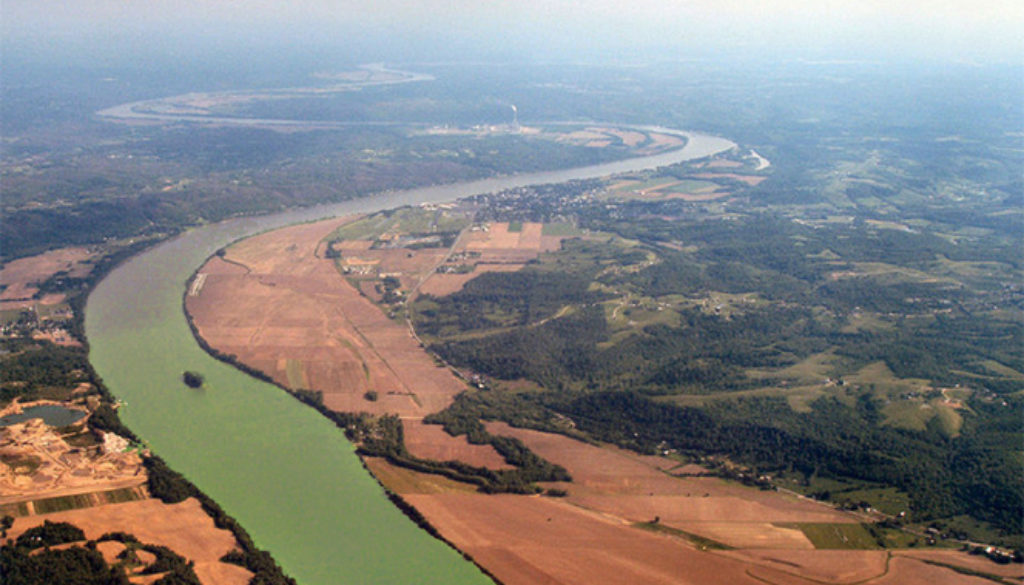Groups Launch Legal Action to Protect Waterways from Slaughterhouse Pollution
By Waterkeeper Alliance
Conservation groups today filed a formal notice of intent to sue the U.S. Environmental Protection Agency for failing to update slaughterhouse wastewater guidelines as required by the Clean Water Act.
More than 8 billion chickens, 100 million hogs, and 30 million beef cattle are processed each year in more than 5,000 slaughterhouses across the country. An estimated 4,700 of these are currently allowed to discharge processed wastewater directly into waterways or to publicly-owned treatment plants.
“Many of these dirty slaughterhouses contribute to impairments in the waterways where they discharge their pollution,” said Sylvia Lam, Attorney with the Environmental Integrity Project. “The most polluting plants also release far more pollution than the cleanest plants. EPA needs to step in, set stronger national water pollution standards for meat and poultry processing plants, and level the playing field.”
The Clean Water Act requires the EPA to annually review, and potentially strengthen, industry-wide water pollution standards—called effluent limitation guidelines —for slaughterhouses to ensure the guidelines keep pace with advances in technology that reduce the amount of pollution animal processing and rendering facilities discharge into the nation’s waterways.
Since at least 2016, the EPA has failed to conduct the required annual reviews for meat and poultry slaughterhouses. The agency last revised a subset of the guidelines for slaughter facilities discharging wastewater directly into rivers and streams in 2004. But some slaughterhouses are still operating under guidelines originally established as far back as 1974.
The EPA has also failed to review whether “pretreatment” guidelines should be developed for slaughterhouses that send their wastewater to publicly-owned treatment facilities.
“Slaughterhouses often release toxic pollutants that impair drinking water supplies around the country,” said Peter Lehner, Managing Attorney at Earthjustice. “They are also the linchpin in the highly polluting industrial meat production chain. Nitrates run off from over-fertilized fields growing animal feed; manure lagoons leak and overflow; animal waste is spread on fields and flows into rivers. We need to clean up every stage. We need the government to do its job.”
“Some of the world’s largest meat companies are dumping huge volumes of pollution into America’s rivers, contributing to toxic algae, dead zones, and fecal bacteria that can make swimmers sick,” noted John Rumpler, Clean Water Program Director at Environment America.
The slaughtering and rendering processes generate wastewater that is contaminated with blood, oil and grease, and fats that contain oxygen-depleting pollutants like nitrogen and phosphorus, pathogens, and other contaminants. When released into waterways, these pollutants can drive excess algae growth, causing algae blooms that suffocate aquatic life, and turn waterways into bacteria-laden public health hazards.
“At a time when communities, businesses, and citizens across the country are facing the devastating consequences of massive toxic algae blooms, EPA must take urgent action to address the largest sources of pollutant discharges fueling those outbreaks,” said Kelly Hunter Foster, Waterkeeper Alliance Senior Attorney. “Slaughterhouses are major sources of this pollution through discharges into rivers and streams, or into city wastewater treatment systems. Our cities’ treatment systems often lack capacity and technology to properly treat this waste – overwhelming the treatment systems, increasing pollution and improperly putting taxpayers on the hook for the industry’s waste treatment problem.”
“The EPA must stop allowing slaughterhouses to treat many of the same rivers and streams we depend on for drinking water and recreation as industrial sewers,” said Hannah Connor, Senior Attorney at the Center for Biological Diversity. “Especially in rural communities, the Trump administration’s ongoing failure to oversee slaughterhouse wastewater is putting wildlife and public health at risk.”
America’s largest slaughterhouses are clustered in rural areas, including northeast and northwest Arkansas, central Mississippi, Iowa, northern Georgia, east central Pennsylvania, eastern North Carolina, southern Indiana, and Sussex County, Delaware.
“Scattered throughout our region, there are several slaughterhouses that have discharged high levels of pollutants into our local waterways, violating their permits with little or no enforcement,” said Betsy Nicholas of Waterkeepers Chesapeake. “As an example, in a recent 18-month period, a meat processing plant in Pennsylvania violated its water discharge permit 62 times, discharging excessive amounts of nitrogen pollution into a tributary to the Susquehanna River.”
Updated regulations would lead to significant improvements in many waterways across the country, especially in those areas of greatest industry concentration.
“Slaughterhouses are some of the country’s biggest polluters,” said Tarah Heinzen, Senior Attorney with Food & Water Watch. “We will not let EPA continue to let the meat industry off the hook for polluting our waterways.”
According to a 2018 report by the Environmental Integrity Project, “Water Pollution from Slaughterhouses,” the most technologically advanced plants are the best performing plants, releasing far less pollution than the rest of the industry. Technology to dramatically reduce pollution from the industry clearly exists, but because of outdated guidelines, EPA and state agencies continue to set permit limits that allow slaughterhouses to discharge far too much water pollution. Meanwhile, 60 of the 98 plants reviewed by EIP release their wastewater to rivers, streams, and other waterways that are impaired because of the main pollutants found in slaughterhouse wastewater. In 2016, Environment America found that the processing plants of just a few large agribusiness companies discharged more than 250 million pounds of toxic pollution into America’s waterways over a 5-year period.
“The pace and size of today’s slaughterhouses create an extremely dangerous environment, in which animals suffer and toxic waste spews into our waterways,” said Animal Legal Defense Fund Executive Director Stephen Wells. “This contaminates water for wildlife and surrounding communities at unprecedented rates. The government must do its job to protect people, animals, and the environment — and stop serving corporate interests at our expense.”
The Environmental Integrity Project and Earthjustice are filing today’s notice on behalf of Waterkeeper Alliance, Environment America, Center for Biological Diversity, Waterkeepers Chesapeake, Animal Legal Defense Fund, and Food & Water Watch.
To view the notice letter, visit: https://waterkeeper.org/wp-content/uploads/2019/07/Slaughterhouse-ELG-and-Pretreatment-Guidelines-Deadline-Suit-NOI.pdf

